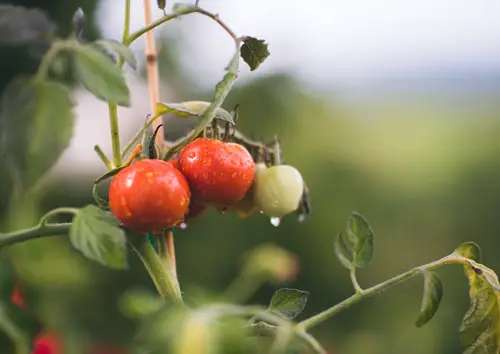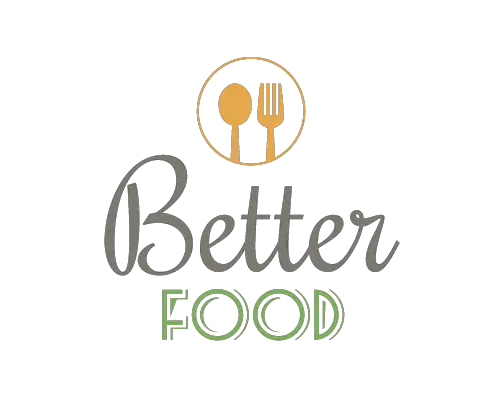In discussions of natural food versus organic food, it’s not uncommon for people to confuse or conflate the two. Some make the mistake of thinking that organic food is the same thing as natural food — but this isn’t the case.
However, the differences can be subtle, which is why it’s essential to delve into them before you embark on a natural or organic diet.
The main difference lies in the labeling of each food, but it can go deeper than that.
If eating healthy matters to you, then understanding the definitions of natural food and organic food is more than necessary — it’s crucial. Hopefully, we can pull back the veil and explain the differences. That way, you can shop with confidence the next time you hit up the grocery store or a farmers market.
The main thing to remember is that natural food is not interchangeable with organic food. There may be some overlap between the two, but that’s not always the case.
Keep reading to learn more about why natural and organic foods are not the same.
Understanding What “Natural” Means
It may surprise you to know that “natural” labels on food don’t necessarily mean anything. The natural food movement is entirely unregulated by the Food and Drug Administration (FDA).
There is an inherent level of trust implied in every “natural” label you see. While that label should mean that there are no pesticides involved in growing it or additives thrown in during production...
There are no laws or regulations to stop manufacturers from outright lying.
That said, the FDA does try to maintain a system of protocol among natural foods and other natural products. According to the FDA, a natural label should state that there are no artificial additives or synthetic ingredients added to the food.
In other words, natural foods shouldn’t contain anything that consumers wouldn’t expect to find in them. Unfortunately, that’s not always the case. Meaning there’s nothing to stop a manufacturer or producer from slapping an “all-natural” label on a box of almond crackers or dried fruit slices.
The U.S. Department of Agriculture (USDA) doesn’t regulate natural products, either. Standards are loose for this type of labeling.
For example, to classify as natural, meat or poultry can’t contain added colors or dyes, nor can it have any artificial ingredients. Yet, meat and poultry can include things like antibiotics and hormones and still be considered natural.
Natural foods can still contain synthetic chemicals and sweeteners.
Even though they are not supposed to have any:
- Preservatives
- Artificial flavors
- Ingredients to prolong shelf-life (such as hydrogenated oils and emulgents)
To put it in perspective, high fructose corn syrup technically falls into the realm of “natural." Yet that’s not something that anyone who eats an organic diet would want to have in their food.
Ultimately, your best course of action is to closely read the ingredients list of any natural or all-natural labels that you come across.
Speaking of prolonging shelf life, check out our article on How Long Does Tuna Salad Last. It includes tips for boosting tuna salad’s shelf life!
Defining Organic Food

Organic food is a whole other kettle of fish — organic fish, obviously.
To begin with, organic food is heavily regulated. Food cannot have the USDA organic label unless it’s certifiably organic.
But what does that mean?
Organic food cannot:
- Contain any antibiotics
- Contain any growth hormones
- Be grown with pesticides or chemical herbicides (these are harmful when ingested)
- No synthetic ingredients
Organic produce goes even further than that, however.
For instance, organic tomatoes can’t receive the USDA organic label unless they’re grown in land that is also certified organic. Organic farms, orchards, and gardens must also do everything possible to foster biodiversity. That way, no natural resources are unnecessarily wasted.
Additives have no place in organic food, which must also contain certified organic ingredients. That goes for fruits and vegetables, as well as meat and poultry.
Any food that boasts an organic label must have a minimum of 95% organic or organically produced ingredients. The only exceptions to that rule are water and salt.
In growing organic foods, farmers and producers cannot use any seeds that:
- Are genetically modified
- Have any allergens
- Have come into contact with toxins or pathogens of any kind
Nutrients must come from biological substances, such as:
- Compost
- Natural animal manure
- Crop residues (leaves, seedpods, and stocks — the leftovers of the plant)
Speaking of allergens, if you or a loved one suffer from nut allergies, you’ll appreciate our article: Is There A Nut Allergy Free Peanut Butter? [+ How to Make!]
Conclusion
You can see how easy it may be for manufacturers and brands to sneak that “all-natural” label onto their food, even if it isn’t strictly natural.
Organic food is trustworthy because nothing gets that coveted label unless it meets strict standards and specifications.
Knowing this, will you continue eating natural foods, or will you stick to certified organic produce, meat, and poultry?
Let us know in the comments!

